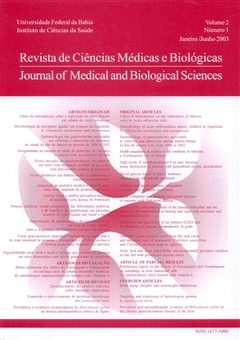Prevalence and aetiopathogenic evidence of Helicobacter pylori in the chronic parenchymatous disease of the liver
DOI:
https://doi.org/10.9771/cmbio.v2i1.4261Keywords:
Cirrhosis, Helicobacter pylori.Abstract
Helicobacter pylori is a bacterium which participates in the pathogeny of some gastro-duodenal diseases, such as gastritis, peptic ulcerous diseases and neoplasias of lymphoma MALT type. The eradication of that bacterium has been contributing to the control of those pathologies. At the moment, scientists are searching for evidences that demonstrate the relationship between the Helicobacter pylori and other diseases that are not gastro-duodenal. The objective of this study is to review the literature about the prevalence of infections by Helicobacter pylori in patients with chronic parenchymatous disease of the liver as well as those writings that suggest any aetiopathogenic participation of the Helicobacter pylori in the evolution of patients with chronic parenchymatous disease of the liver (DPCF). After analyzing the Medline database, from January, 1990 to December, 2002, we observed that several authors report a high prevalence of the Helicobacter pylori in patients with DPCF, however the number of samples and the adopted methodology have not been sufficient for external validation. Although the theoretical principles are clear, there is no proof that that bacterium contributes to the appearance of chronic inflammations in the liver or to the progression of hepatic fibrosis.Downloads
Download data is not yet available.
Downloads
Published
2003-01-01
How to Cite
Silva, M. C. B., Freitas, L. A. R. de, & Paraná, R. (2003). Prevalence and aetiopathogenic evidence of Helicobacter pylori in the chronic parenchymatous disease of the liver. Journal of Medical and Biological Sciences, 2(1), 133–139. https://doi.org/10.9771/cmbio.v2i1.4261
Issue
Section
Review Articles
License
The Journal of Medical and Biological Sciences reserves all copyrights of published works, including translations, allowing, however, their subsequent reproduction as transcription, with proper citation of source, through the Creative Commons license. The periodical has free and free access.


